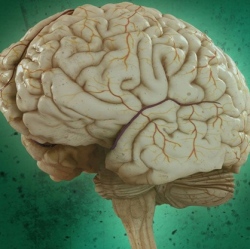
Neuroscientists identify a brain circuit that’s key to shifting our focus from one object to another. Picking out a face in the crowd is a complicated task: Your brain has to retrieve the memory of the face you’re seeking, then hold it in place while scanning the crowd, paying special attention to finding a match. A new study reveals how the brain achieves this type of focused attention on faces or other objects:
A part of the prefrontal cortex known as the inferior frontal junction (IFJ) controls visual processing areas that are tuned to recognize a specific category of objects, the researchers report in the April 10 online edition of Science.
Scientists know much less about this type of attention, known as object-based attention, than spatial attention, which involves focusing on what’s happening in a particular location.
However, the new findings suggest that these two types of attention have similar mechanisms involving related brain regions, says Robert Desimone, the Doris and Don Berkey Professor of Neuroscience, director of MIT’s McGovern Institute for Brain Research, and senior author of the paper.
“The interactions are surprisingly similar to those seen in spatial attention,” Desimone says. “It seems like it’s a parallel process involving different areas.”
In both cases, the prefrontal cortex, the control center for most cognitive functions, ppears to take charge of the brain’s attention and control relevant parts of the visual cortex, which receives sensory input. For spatial attention, that involves regions of the visual cortex that map to a particular area within the visual field.
